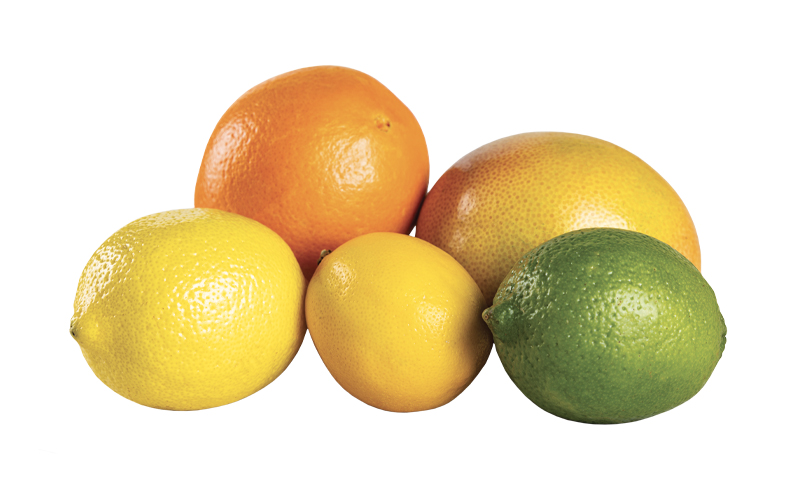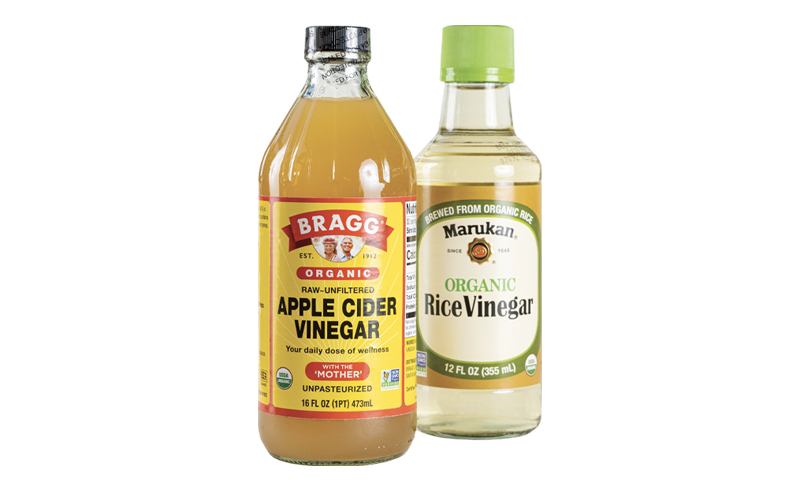
As the season of indulgence comes to a close (Restaurant Week being the only obstacle left for a slimmer, trimmer New Year), my mind turns to—red cabbage. No, really. I love cabbage of all kinds, and since salads are an obvious route to healthful habits and cabbage is one of the best available salad greens at this time of year, the anthocyanin- and fiber-loaded crucifer is a versatile, delicious, and logical choice.
Although available year-round, cabbage is at its sweetest after a light frost. The noticeable increase in sweetness for many autumn and winter vegetables is due to their own sense of self-preservation—with the onset of cool weather, the plants increase their sugar content to act as natural “antifreeze.” If stored for a very long time or in arid conditions, red cabbage will lose moisture and crunch. Before buying, always give it a squeeze and check its heft—the cabbage should feel heavy for its size and very firm without any give when pressed. That being said, cabbage is an exceptional storage vegetable and can last for weeks in the crisper drawer of the fridge even after it has been cut (if the cut surface turns gray or black, just trim it off before use). So don’t let a large cabbage intimidate you—it doesn’t have to be consumed in one sitting.
My original intention was to write a single, simple salad recipe, but I couldn’t decide on just one—so here are four, each evolving out of the preceding version with recommendations for using each. And as with all of my recipes, I encourage you to tailor these to fit your own preferences and needs, and make them your own.
The Evolving Chopped Cabbage Salad
Think of this salad as a train with lots of stops enabling you to disembark at the first station, one of the stops in the middle, or all the way at the final destination. You’re sure to find something delicious at every stop—just let the rest of the menu determine your itinerary.
Begin with a crisp head of red cabbage, peeling the outer few leaves away until you have fresh looking leaves with no blemishes or desiccated patches. I hesitate to indicate the amount of cabbage you will need because the size of heads can vary dramatically. Therefore, begin with the amount of cabbage you think you need, slicing it as thin as possible by hand with a knife or mandolin. You can also slice it with a food processor, which will accomplish the task in seconds, but it does limit your choice of thickness for slicing and can look like your cabbage was chopped willy-nilly to toss in a trough to feed the farm animals. For the most simple salad, toss the shredded cabbage in a wide bowl with a dressing of good vinegar or lemon juice and a good oil, such as extra-virgin olive oil, a nut oil, or something more neutral (and extremely healthful) like avocado oil (see In Your Pantry for ratios, details, and choices of vinegar and other acids). Season the cabbage with salt and pepper and toss again, tasting to adjust as necessary. Cabbage prepared in this manner can be a revelation if you are accustomed to rich and creamy coleslaw or cabbage salads dressed with mayonnaise and sugar and who knows what else. The flavors are crystal clear and vibrant, the crunch refreshing. This austere version has the added benefit of being stable for hours at room temperature—great for a buffet—and even longer if refrigerated. Over time, the crunch may mellow but not in an unpleasant way, and the acid in the dressing will change the color of the cabbage to a lovely and much brighter shade of magenta. I love to use this salad to top a good sandwich (herby porchetta or cold cuts, especially, but a bratwurst would benefit as well). It could also be a refreshing companion to a smoky slab of ribs.
The next stop on the salad train would include the addition of slices of radish, apple, or pear, and green onion or shallot. The salad with these fruity fortifications would be lovely accompanying a grilled cheese sandwich or bowl of soup, something with a little extra richness. I recently served this salad with a cheese soufflé, and it was a perfect and memorable complement.
For a more substantial salad, one that could stand alone, add raisins or other dried fruit (chopped into bite-size pieces if necessary), toasted nuts, and shavings or crumbles of cheese—a nutty one like Comté or aged Gouda, Grana or Parmigiano Reggiano. Brined cheeses like feta would be interesting as well, as could vegan nut-based cheeses. Due to the complexity of this salad, I would use it to accompany simple proteins, such as a ham steak, crispy duck breast, or leftover roast turkey, a grilled portobello mushroom, or even a slice of crispy baked or fried tofu.
The addition of protein brings us to the final stop on the cabbage salad express. Our salad up to this point makes the perfect place to use up leftover rotisserie chicken or other roasted meats. Poached chicken is a fast and flavorful option as well (either a whole chicken or parts—breasts are by far the fastest and easiest to prepare). Just shred the cooked meats and toss them in the vinaigrette and seasonings. To make the salad even more filling, a few slices of avocado would certainly be in order, and an herb, such as fresh cilantro or Italian parsley, would be the final gilding on a fantastically healthful and delicious meal. In fact, no matter where you decide to stop on your red-cabbage journey, it might just feel like the season of indulgence hasn’t come to an end.
In Your Pantry
Something Sour
Acidity is an oft overlooked or unrecognized component of a balanced dish that when neglected can result in bland, flabby, uninteresting food, especially concerning salads. The two most common forms of acid to use in cooking are citrus fruits (citric acid) and vinegars (acetic acid). In terms of sourness, they are essentially interchangeable, but the acidity level and specific flavor varies from product to product. The usual ratio of oil to acid is 3 parts oil to 1 part acid, but this ratio can certainly be manipulated to fit the situation. Feel free to make substitutions, and let some of these pantry staples inspire your next sensational salad.
Citrus
While lemon may be the first citrus fruit that comes to mind for adding a little sunshine to a salad, don’t overlook other members of the citrus family. In particular, limes (which have a similar level of acidity to lemons—five to six percent) are especially handy for Caribbean, Mexican, and Asian-influenced salads. Meyer lemons (smooth skin on the outside, less acidic than standard lemons on the inside) have a nuanced complexity and perfume. Oranges (which are usually too mild to dress a salad on their own) and grapefruit (whose bitterness can be overwhelming in some dishes) can be combined with lemon or lime to achieve the required level of sourness for the dressing and still lend their own flavors.
Wine Vinegars
Most vinaigrettes are made with wine-based vinegars (hence the vin in vinaigrette). Their acid (acetic acid as opposed to citric acid in citrus) averages around six percent, although some, like sherry vinegar, can be as high as seven to eight percent. White wine vinegars tend to be more delicate, while red wine vinegars (the workhorse of salad vinegars) tend to be slightly more complex and fruit forward. Balsamic vinegar is another thing entirely, although most of what you find on grocery store shelves is more closely related to red wine vinegar than to the true Balsamico Tradizionale condiment. White balsamic vinegar, a relative newcomer in the world of vinegar, is currently popular and boasts a bold and fruity aroma that pairs well with sharp and pungent cheeses and sulfurous vegetables. Good sherry vinegar is especially companionable to certain ingredients like peppers and nutty cheeses.
Apple Cider and Rice Vinegars
The least acidic of culinary vinegars, apple cider vinegar (5%) and rice vinegar (around 4%) are also quite versatile, especially when more subtle acidity is required. Apple cider vinegar is a natural complement to salads containing fruit (especially apples—duh), and also has purported health benefits that millions swear by. Rice vinegar is mild in flavor, similar to white wine vinegar. Use it for Asian inspired salads, especially in combination with soy sauce and a hint of toasted sesame oil.





